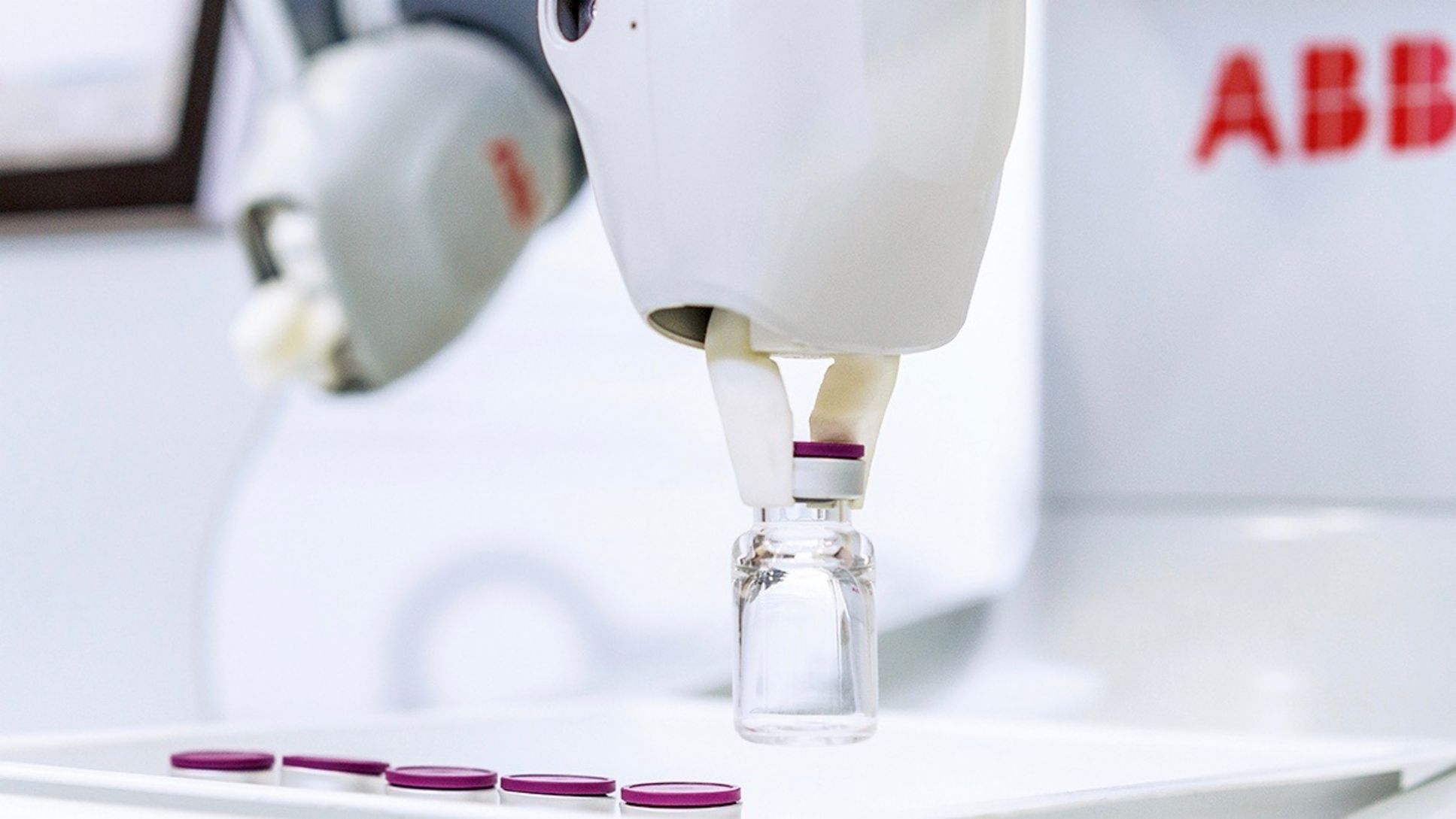Customization and automated mass production were once two ends of the manufacturing spectrum. Today, they are being drawn together by the evolving needs of consumers. Imagine a bottling plant close to Madrid, where machines fill up to 50,000 bottles a day. It’s a manufacturing process that has served the beverage industry for decades, delivering high volumes of a standardized product at speed. But in this factory, something else is happening. Integrated within the line are robots that pick out individual bottles and put them on automatic guided vehicles, or AGVs. The bottles are transported to a separate station. Here, a small batch of bottles is filled with a different ingredient from the main batch or receives a special label. Whatever the customization process, it all happens quickly, efficiently and automatically, without interruption to the main production line.
To see the latest factories in operation is to understand that a fundamental transformation is underway, not just in the architecture and systems of manufacturing plants, but in the possibilities these new technologies enable. One company at the forefront of this development is ABB, the Swiss-based firm that provides the technology behind machine automation and robotics.
“The key term is ‘flexibility,’” says Javier Rodriguez, who is vice president of strategy for the Robotics Business Line at ABB. Sitting in the company’s local Robotics site in Baden, Switzerland, he is surrounded by some of the latest robots showing off their capabilities for visitors—one takes your coat, another checks and sorts medicine bottles, a third easily beats you at a game of buzz wire. They are dexterous, efficient, and disconcertingly anthropomorphic.
“Demand is changing so fast that manufacturers can no longer predict with certainty. This means that flexibility is needed throughout the value chain, but it cannot be at a high cost." Javier Rodriguez
A company that started out producing electrical lighting and generators over 130 years ago, ABB is now at the forefront of robotics and the digital transformation of manufacturing worldwide. Where both these trends come together is in the flexible factory, defined by Rodriguez as one that allows the plant owner to change product configuration, batch size, or flow optimization simply and quickly to meet customers’ needs. The development of the flexible factory is driven by two distinct trends. On the one hand is a revolution in demand: today’s end consumer expects individualization along with speedy delivery, quality, and a competitive price. To meet these needs, ABB’s customers, the plant owners, want simpler and smarter automation solutions. However, they also want flexibility in how they invest in their factories. “Demand is changing so fast that manufacturers can no longer predict with certainty. This means that flexibility is needed throughout the value chain, but it cannot be at a high cost,” says Rodriguez.
On the other hand, there’s the rapid evolution in technology: digitalization, the Internet of Things, sensor technology, communication between machines and the cloud, self-regulating and self-calibrating systems, machine learning, and artificial intelligence—in a word, Industrialization 4.0. The ABB Ability platform and multiple partnerships help ABB’s customers meet the current challenge.
To do this requires building flexibility into every layer of the manufacturing process: the machine, the line, and the enterprise. The shape and design of the factory floor itself is changing. Where there was once a conveyor belt—a line moving at a set speed—there is now a series of discrete production islands operated by robots and served by AGVs. The flow of information within the factory has also changed. With machines themselves becoming ever smarter, decisions do not need to be made at a higher level but stay at the machine or on the shop floor. “The basic architecture is becoming simpler and flatter because the factory can do more on its own,” says Rodriguez.
The automobile industry has been one of the first to experiment with this new approach as it addresses increasing unpredictability in demand, shorter model cycles, and the shift to e-mobility. For example, as the technology improves, electric vehicles are becoming more popular. However, it is difficult to predict by how much demand will grow. Auto manufacturers therefore need a flexible approach—they need to keep open the option of building internal combustion engines and hybrids alongside new electric vehicles. Some of them need one plant that can build all three. The flexible factory gives them this, with production islands for each type of engine. If demand for one category changes, islands can be added or taken away. “It’s a modular system, so you can manage changes in demand and increase utilization of your assets,” says Rodriguez.
“The challenge is having reliable software and platforms to process the data in an almost real-time situation in high-volume operations." Javier Rodriguez
One sector with a high need for flexibility is consumer packaged goods. From shampoos and cosmetics to food and beverages, end customer demand changes rapidly, so manufacturers have to produce smaller lots, with more variety in product and package design, in ever shorter cycles.
Flexible factories are clearly the solution, but they bring with them some new challenges. One of the biggest of these is optimizing the flow. “I call it internal logistics,” says Rodriguez. “How do you work out the best path for the AGVs? We didn’t have this problem in the past; we just needed to ensure that the line was running at the right speed.”
To answer this question, the manufacturing sector has been looking to warehouse logistics, where advanced automation has been developed to manage the mass of products. Related to this is the new challenge of knowing where everything is in the plant when there is no longer a linear path, but multiple paths.
Then there is the question of what to do with the enormous amount of data produced by digitally connected machines. “The challenge is having reliable software and platforms to process the data in an almost real-time situation in high-volume operations,” says Rodriguez. This requires more work by people skilled in data science and algorithm development.
With algorithms optimizing processes, the automation paradigms change. “The platform allows information to percolate through the enterprise,” says Rodriguez. “It moves us from rule-based to goal-based automation. Instead of saying the temperature of the furnace must be ‘x,’ we now say the temperature of the furnace must be the right one to reduce quality issues and the algorithms must find out what it is.”
The fully automated, flexible factory is already a reality, but the final challenge is enabling deployment in brownfields and retrofitting existing lines. To do this requires attaching smart sensors to machines that have no processor and no data, creating a bridge to bring them into the new digital ecosystem. “This is a major undertaking that requires a modular approach,” says Rodriguez. “We have to find ways to complement existing systems without compromising the way they currently work.” Rodriguez’s guess is that in ten to twenty years from now, 10 to 15 percent of factories will be greenfield—fully automated and flexible—40 to 60 percent will be hybrid, and 10 to 20 percent will still be conventional factories. “The technology is evolving to meet our new needs,” he says. “I don’t think it’s all there yet, but there are certainly a lot of smart people thinking about how to solve these challenges.”




